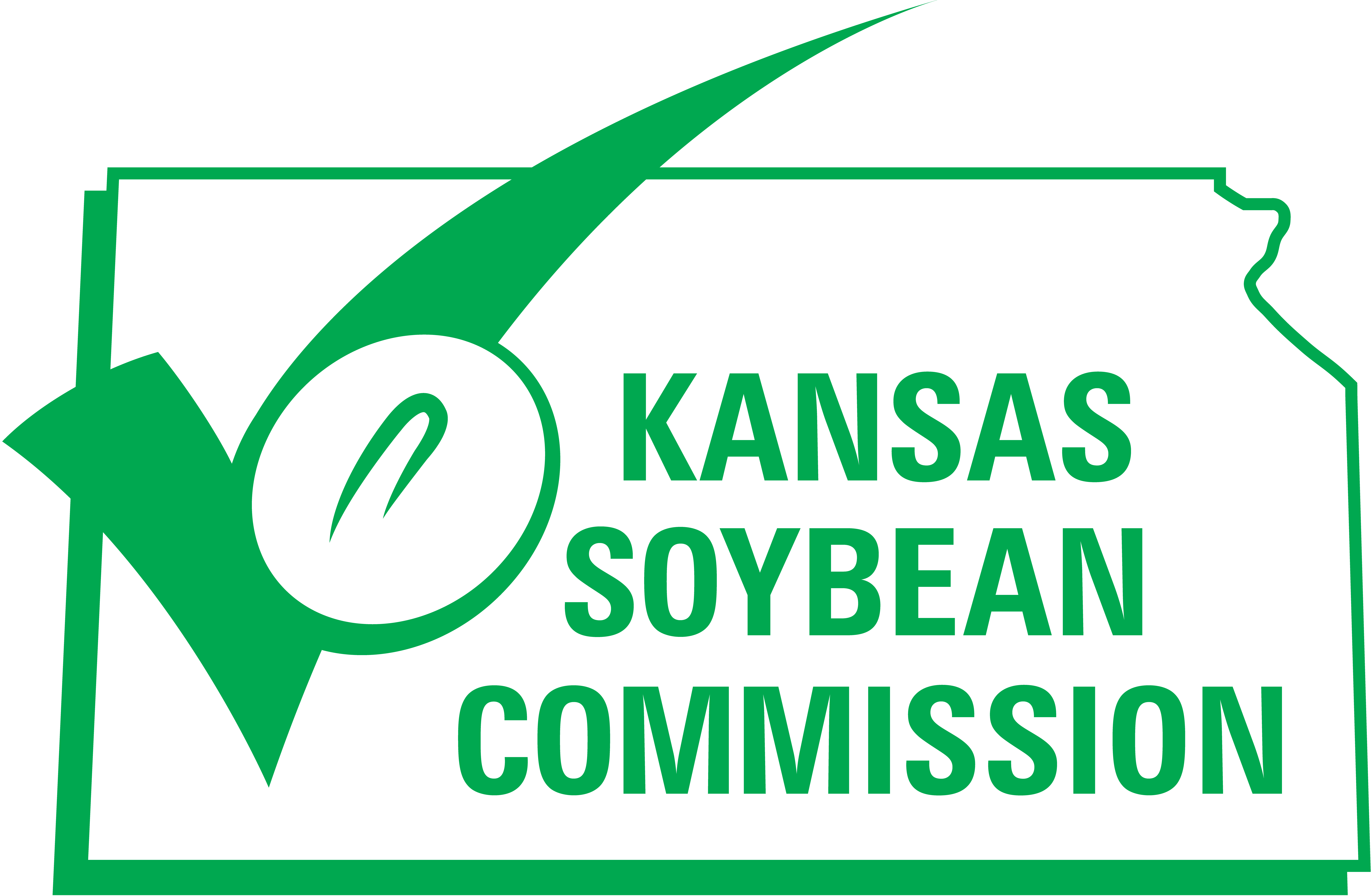Sustainability covers a lot of ground; key in policy
Emphasis continues to build on the subject as it becomes the focal point of many policies and organizational projects – think Conservation Reserve Program (CRP) acres, environmental quality incentives and the American Soybean Association’s new Sustainability and Conservation website space.
Advocacy at ASA
According to ASA’s Director of Government Affairs, Ariel Wiegard, there is a sustainability component in many of the ASA issue areas – biodiesel and infrastructure, trade and regulated crop protection and biotechnology products.
“Sustainability is part of all of our policy areas,” she says. “We may not talk about it every day in every issue area, but it is a part of every issue area.”
The Conservation and Precision Agriculture Advocacy Team, vice-chaired by Kansan Charles Atkinson, spearheads much of the discussion on the topic. He describes the advocacy team as a “catch-all,” saying that they are busy throughout the year looking at policies related to sustainability, food and technology. The team exists to advise and guide ASA’s policies in topics that fall under their purview.
“The goal is to help ASA to be better, stronger advocates for all soybean growers in the country,” Wiegard says. “All of our advocacy teams funnel information back to ASA because we can’t talk to every grower individually.”
Conversely, ASA serves as a resource for all soybean growers in the U.S. to understand the issues at hand. In the spring of 2021, ASA created a website space dedicated to sustainability. The page, housed at https://soygrowers.com/key-issues-initiatives/key-issues/sustainability/, features details on federal conservation programs, resolutions determined by ASA regarding conservation and information about on-farm practices considered to be sustainable.
Conservation in Kansas
Agronomist and Certified Crop Advisor Jeremy Olson, who currently serves on the Kansas Soybean Association board of directors, believes that Kansas is on the right track when it comes to conserving resources. From his professional point of view, Kansas has moved to largely no-till systems, and many operations are implementing cover crop systems and revamping drainage systems.
Atkinson agrees. “Kansas has done a great job with conservation.”
Both agree that further progress can still be made. Olson says there could be more technical knowledge shared with farmers, a task he takes on as a CCA.
“It’s my job as a certified agronomist to educate my peers, whether that be with soil fertility and nutrients or with irrigation and conserving water,” Olson explains.
Atkinson looks to ways that farmers in Kansas can level up the progress already being made, “Is it a possibility to bring cover crops into the system, maybe further reduce tillage?”
He also points to opportunities with fertilizer management and weed and pest control. Managing fertilizer doesn’t mean cutting yourself short, Atkinson says, but rather being more proactive and being more precise in applying the product. Input prices trending upward could drive some toward more efficient practices.
Overall, conservation is a joint effort involving landowners and tenants, neighbors, crop advisors and legislators, Olson says. It is important to conserve the land and nutrients to be available for future generations.
Federal Incentives to Switch
Dating back decades, funding has been made available to farmers through various federal programs that incentivize landowners to implement conservation strategies on agricultural land.
Such government programs play an active role in sustainability, Olson asserts, adding that maintaining soil to keep water on the farm requires water flowing in the right direction, the right soil practices in place, and organic matter on the surface – all those factors work together to make a farm profitable.
“If a farmer takes on 100% of the cost themselves, it can be costly,” he says. “One of the main goals of sustainability is for farmers to be profitable and economical.”
Atkinson believes there are definitely opportunities if the government gets involved, saying that when an incentive is available it can encourage someone to adopt a conservation approach to farming. However, he also cautions that the programs should not act as a giveaway.
“I’ve always felt when a person is accepted into a program, if they have a little skin in the game themselves, they are going to be better managers, and they are going to take care of things better.”
The farm bills passed in Congress direct the funding available for conservation programs. Wiegard explains that following the 2018 farm bill, funding for the working lands programs, like the Environmental Quality Incentives Program (EQIP), increases over time and funding for easement programs, such as CRP, drop off over time.
“I think our growers would probably generally agree that is a good trend for soybean growers,” Wiegard says. “We want the money going into working lands to help farmers acquire precision agriculture equipment, to improve soil health, reduce erosion and help with things like integrated pest management.”
She states that programs like the Conservation Stewardship Program (CSP) and EQIP were much better coordinated in the 2018 farm bill. She adds that Congress tweaked guidance to link practices better so conservation practices work in “bundles” that apply across multiple programs. Essentially, if a farmer enters one program but also wants to work in the other one, he or she won’t have to learn a whole new system of practices – it’s seamless.
Looking ahead, ASA is gearing up for the 2023 farm bill. The association has coordinated education sessions for advocacy teams and plans to send a survey to all soybean growers in the U.S. as well as host listening sessions to receive feedback.
Wiegard says, “We want to set a baseline of understanding to make sure that everybody on our advocacy team knows where we are coming out of the 2018 farm bill, so we can wrap our heads around what we want to see for conservation and precision agriculture in the 2023 farm bill.”
One area of the bill of particular interest to ASA is reviewing the breakdown of spending for conservation initiatives versus farm programs and safety nets.
“We’re going to be talking about funding levels throughout the farm bill,” Wiegard says. “We will need to balance out our priorities around soil health, water use, greenhouse gases and sequestration.”
Wiegard emphasizes that ASA works under the direction of what action growers request.

